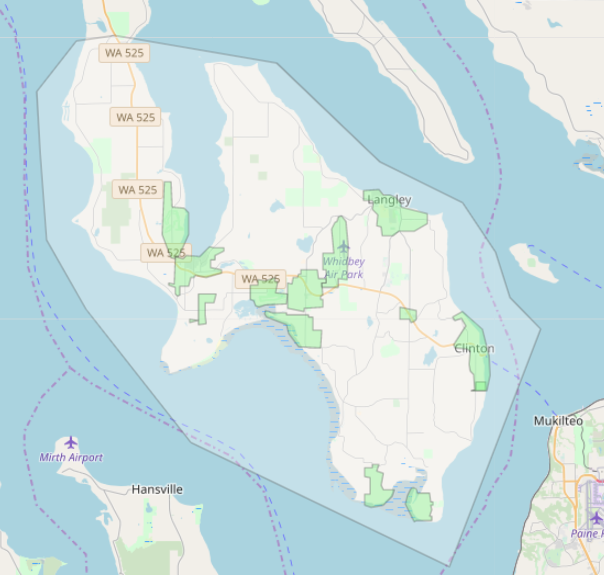High-speed internet isn’t just coming to Whidbey Island; it’s here. Exactly where that here is is something that takes a bit more effort – and is getting easier to find out.
A recent conversation paraphrased to capture a Classic Catch-22:
Islander “Hi, I know people that want to move to Whidbey Island, but only to places that have high-speed internet access.”
Provider, “Happy to help. Tell me their address.”
Islander, “They won’t know the addresses they’re interested in until they know where the service is.”
Provider, “I can’t tell you where the service is without knowing their address.”
There are these things called maps. Radical tech for a tech company? At least one knows how to deploy the fiber and the information.
One of the common requests for folks moving to the island, or even within the island, is high-speed internet access. That request was common before. Now, it’s become essential. Then, it was about not having a movie buffer as folks relaxed in the evening. Now, the internet is needed from the start of the work and school day, through the homework period and pesky off-hour work calls, and then maybe, maybe a movie. As one family put it, imagine a place where the parents can work from home with a nice view, and the kids can play outside, maybe even in the water without anyone having to use a car or a bus. That’s possible here, but not everywhere – yet.
A casual collection of the internet providers on the island mentions Whidbey Telecom, Xfinity, Ziply Fiber, and Wave. There are undoubtedly others, but those were the easiest to find. Checking to see what they mean by high-speed internet and where they provide it led to at least two conversations like the one above. One either never responded or their response got lost. Only one provided a map, Whidbey Telecom.
The definition of High-speed internet continues to change. Who remembers the radical upgrade from 1,200 baud to 2,400 baud? Dial up. Log in. Relive “You’ve Got Mail.” Now, a convenient definition is 1Gig, 1,000Meg, 1,000,000K – and some will still say that is not enough. And yes, 1T, 1,000G is probably coming sooner than you expect.
The other part is that upload and download aren’t the same. Some systems claim 70M download, but deliver less than 1M upload. That’s fine if you’re streaming movies (usually), but terrible if you’re creating movies and videos, as many islanders do. Aside from the reclusive Hollywood production industry, anyone dealing with online meetings or uploading lectures or searching for an outlet for advocacy can benefit from fast upload speeds.
(Personal experience – A roughly one hour video like Whidbey Real Estate and Pandemic News – Summer 2020 took most of an hour to upload to YouTube using a regular DSL connection. The same video took about 6 minutes on a 1Gig line – and uploaded so quickly on a 10Gig line that I sent it three times because the Done message flashed by so quickly.)
As usual on the island, the best resource is your neighbors. There’s that pesky Catch-22 again. Which neighborhood? At least Whidbey Telecom was kind and open enough to publish their existing service map. (See above.)
Without much of a surprise, the more people there are per mile, the economical it can be for a company to install the backbone of such a service. Also without much of a surprise, if someone is willing to pay the bill, some company is probably willing to extend their service.
The entry of high-speed internet to the island was proceeding as technology does, seemingly slow, but actually fairly rapidly. The pandemic accelerated that. Fortunately, because the basic infrastructure was being installed, the island has a head start.
(Thanks to the Clinton Library, part of the Sno-Isle Library system for leaving their wi-fi signal on. Thanks to good weather that made it easy to enjoy their outdoor sitting area and that Big GiG fiber. By the way, they’ve found creative ways to allow pick-ups and drop-offs even while the building is closed. Nicely done.)



Thank you for your informative blog! You have answered so many of my questions without knowing it! We are considering seriously moving to Whidbey within the year but looks like we should get a jump on things!
LikeLike
An early welcome to the island. Send me a note if you have any questions. tetrimbath@gmail.com
LikeLike
Ok so 2 1/2 years later…what’d be the update on internet access in 2023, particularly on the south end?
LikeLike
There must be progress. As for a specific address, one step would be to check the links in the post. Every address can have a different stor. Good luck. PS The only addition I can think of is Starlink (https://www.starlink.com/).
LikeLike